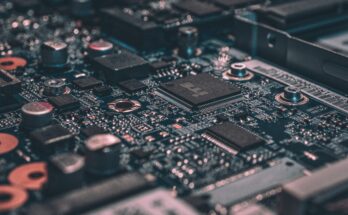Introduction
Lighting design tools complement the overall design by truly bringing a model out of the dark and into a lifelike world where rays of light touch it at every angle. Without adding this element to the rendering process, it is impossible to get a genuine feel for the finished product.
Let’s take a look at how lighting design software works and the things you need to consider before choosing an add-on for your 3D modelling program.
How does lighting design software work?
Lighting design software is an essential addition to any 3D modelling suite. And for anyone who is serious about seeing a project come to life and offer the most photorealistic representation, lighting is one of the most important considerations. There are different products that are able to perfect the lighting process and they may work in a couple of different ways.
Without getting into too much scientific detail behind the different methods it’s good to know that there are a couple of ways in which the desired effects can be achieved. And the type of method you opt for will depend on your needs.
Radiosity
One way to show how light shines across a design is to use radiosity. This is where surfaces are divided into tiny patches and then calculations are used by the lighting software to determine how much light lands on each patch. This is a particular favourite for those working with matte surfaces.
Raytracing
When working with transparent and translucent surfaces, in particular, raytracing is able to achieve fantastic rendering results by using a slightly different method. It is a point-specific process where each ray comes from the light source creating a separate calculation as it lands and reflects from a surface. It will produce better results for more difficult objects but it can be more time-consuming as well. It is an angle-dependent method that requires every new angle to be recalculated from the light source; hence the additional time needed.
Considerations to make
Lighting design software will use one or both of the above methods to achieve the desired results. After assessing the technical aspect of a potential program, it’s time to consider other areas that may influence your decision.
Budget
You might assume that design software and the available add-ons would all fit within one ballpark figure. However, the technology in question can vary significantly in the output quality and in its range of abilities. Therefore, the price tags can be drastically different. If your projects only need a basic level of lighting enhancements, then you might find that the most advanced packages available will offer tools that you simply never use.
Modelling requirements
As we have seen, the cost of modelling software differs from program to program. Some packages are created to offer very specific results in certain areas while others are more general allrounders. It is vital to understand what your design needs are and choose the tools that are best suited to that job. Spending hours getting to grips with overly complicated plugins won’t be time well spent if it doesn’t ultimately improve your specific designs.
Collaboration
Many of the best lighting design programs on the market are compatible with a range of different 3D modelling programs that allow for collaboration between owners of different parts of a project. If you are considering a 3D modelling suite and its potential lighting add-on tools, then make sure that you are able to easily share and collaborate on various parts of the process when making your investment.
Ease of use
Lighting design tools that are created for extremely complex calculations will need a certain amount of time allocated to mastering all that they have to offer. Some products are more user-friendly than others and will better suit those who are looking for more general results. A Click-and-drag approach is adopted by more basic tools and could be the perfect solution if you aren’t looking to get into too much detail.
Scalability (extensions and plugins)
Another important consideration when choosing your lighting design software is additional uses that you may require in the future. Some projects could involve more complex calculations to achieve the necessary effects. So if you think that further capabilities might be on the cards, then consider software scalability carefully. A host of add-ons are available including comprehensive search functions, technical data, detailed descriptions and various others.
Read Also : Windows Replacement: How Long It Takes and How It Transforms Your Home
Summary
Lighting design software is just one of the key aspects of creating photorealistic finishes. They can function slightly differently and achieve varying levels of detail. Programs like these need to be considered in conjunction with the overall design suite that you use or plan to use. And taking the time to learn every benefit available from a product will also help enhance results. Designers are always glad that they went the extra mile and took the time to choose the perfect lighting software for their needs.




